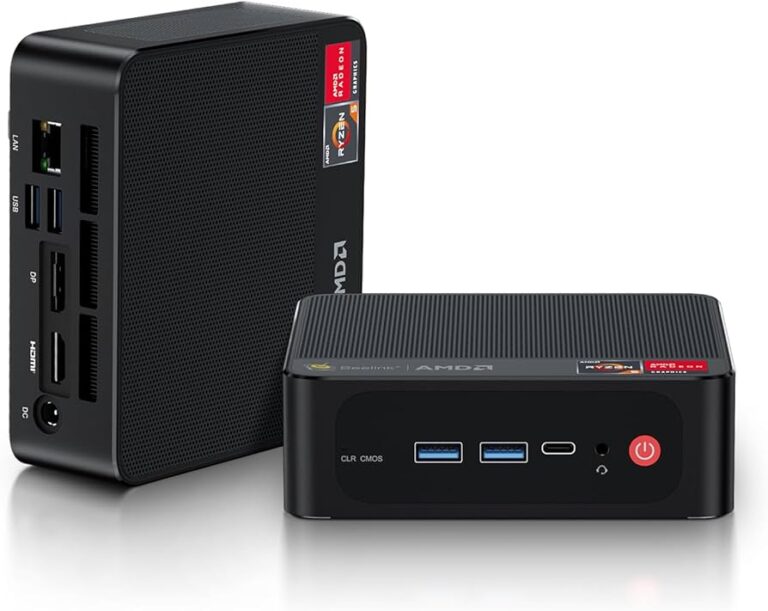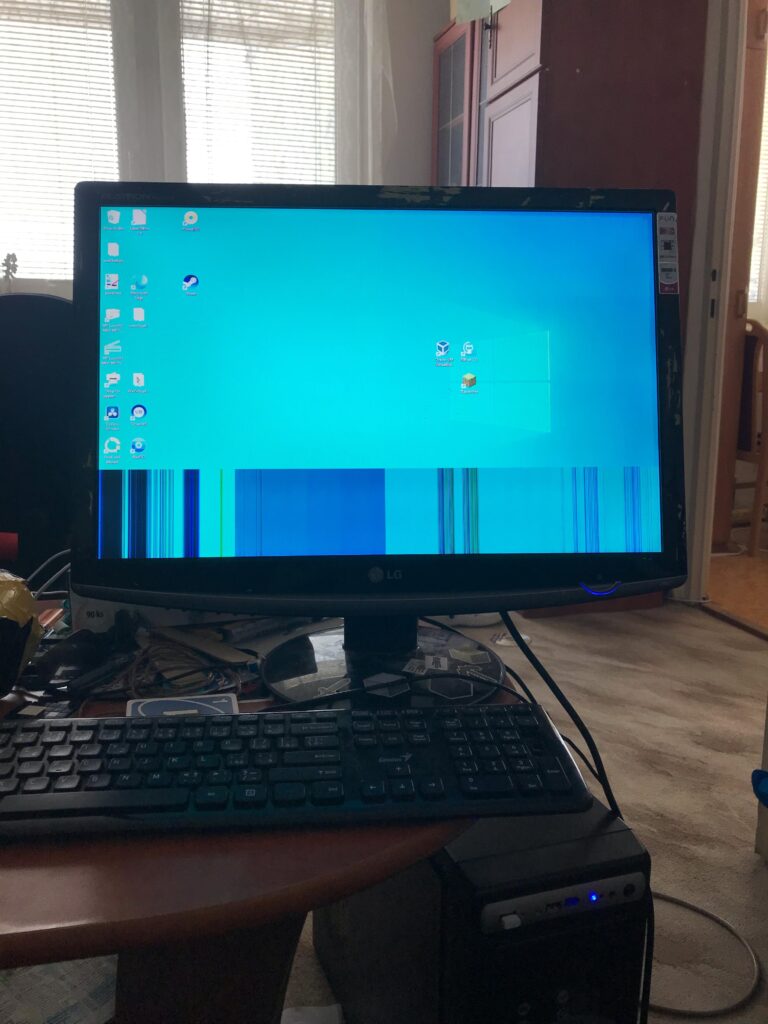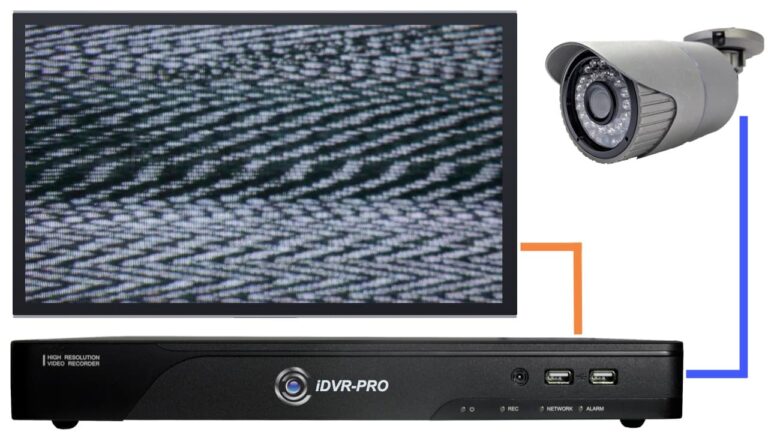What Causes Monitor to Go Blank : Unveiling the Troublesome Culprits
A monitor may go blank due to loose cables or a faulty graphics card. The problem of a monitor going blank can be caused by loose cables or a malfunctioning graphics card, leading to loss of display.
It is important to check and ensure that all cables are securely connected and the graphics card is functioning properly in order to resolve this issue.

Credit: www.bostonglobe.com
Troubleshooting Blank Monitors
A blank monitor can be frustrating, especially when you’re in the middle of an important task. However, before you panic and start considering buying a new monitor, it’s crucial to identify the root cause of the problem. Troubleshooting blank monitors step by step can save you time, money, and unnecessary stress.
Common First-response Checks
When your monitor goes blank, there are a few quick checks that you can perform to rule out common issues. These common first-response checks can help you identify whether the problem lies with your monitor, cables, or computer system.
- Check the power source: Ensure that both your monitor and computer are properly connected to a power source. Additionally, verify that the power outlet is functioning correctly.
- Inspect the cables: Examine the cables connecting your monitor to the computer. Ensure that they are securely attached and not damaged. If possible, try using different cables to see if the issue persists.
- Adjust brightness and contrast: Sometimes, the monitor may appear blank due to incorrect brightness or contrast settings. Use the monitor’s menu buttons to adjust these settings and see if the display reappears.
- Try a different monitor: If you have access to another monitor, connect it to your computer to determine whether the issue lies with the monitor itself or the computer system.
Step-by-step Guide To Diagnose
If the common first-response checks didn’t resolve the issue, don’t worry. There’s a step-by-step guide you can follow to diagnose and pinpoint the cause of your blank monitor.
- Restart your computer: A simple restart can often solve minor software glitches that might be causing the blank monitor. Ensure you save any unsaved work before performing a restart.
- Check the monitor’s power indicator: If the monitor’s power indicator light is not lit, it indicates that the monitor is not receiving power. In such cases, check the power cords and connections, and consider trying a different power outlet.
- Access the monitor’s on-screen display (OSD): Many monitors have an OSD menu that allows you to adjust various settings. By accessing the OSD, you can verify if the problem lies with the monitor itself or with the computer system.
- Update display drivers: Outdated or corrupted display drivers can cause issues with the monitor’s display. Visit the manufacturer’s website to download and install the latest display drivers specific to your monitor model.
- Perform a hardware check: If all else fails, it may be necessary to open up your computer and check the hardware components. Inspect the graphics card, memory modules, and connections to ensure they are properly seated and functioning.
By following this step-by-step guide, you can effectively diagnose the cause of your monitor going blank and take the necessary actions to fix the issue. Remember, troubleshooting your monitor step by step will save you time and frustration, allowing you to get back to your work swiftly.
Internal Cable Connections
One of the common reasons for a monitor to go blank is the issue with internal cable connections. The cables inside your monitor carry important video signals that allow it to display images and videos. If these cables become loose, damaged, or improperly connected, it can result in a blank screen. In this section, we will explore the impact of faulty cables, the importance of checking and securing all cables, and how cable management affects monitor performance.
Checking And Securing All Cables
Regularly checking and securing all cables is crucial to ensure optimal monitor performance. Loose or improperly connected cables can cause intermittent signals and lead to a blank screen. Here are some steps to follow:
- Start by disconnecting all the cables from your monitor, including the power cord, HDMI cables, and any other video input cables.
- Inspect each cable for any signs of damage such as frayed wires or loose connectors.
- Carefully reconnect each cable, ensuring a secure and snug fit.
- If you encounter any damaged cables, replace them with high-quality replacements to ensure a reliable connection.
By regularly checking and securing all cables, you can prevent many monitor issues caused by loose or damaged internal cable connections. This simple step can save you from the frustration of dealing with a blank screen.
Impact Of Faulty Cables
Faulty cables can wreak havoc on your monitor’s performance. When cables are damaged or not functioning correctly, they can disrupt the flow of video signals crucial for displaying images. As a result, your monitor may go blank, or you might experience flickering screens or distorted visuals.
To identify faulty cables, look out for the following signs:
- Intermittent blackouts or flashing screens
- Distorted or blurry images
- No response or signal from your monitor
- Loose or unstable connections
If you notice any of these signs, it’s important to take immediate action to address the cable issue. Replacing the faulty cables with high-quality ones can eliminate the problem and restore your monitor’s functionality.
How Cable Management Affects Monitor Performance
Proper cable management plays a significant role in maintaining optimal monitor performance. Disorganized and tangled cables not only create an unsightly mess but can also impact the functionality of your monitor. Here are a few reasons why cable management is important:
- Prevents cable strain and damage: Properly arranging and securing cables minimizes the chances of cable strain, which can result in damaged internal wires.
- Enhances airflow and cooling: Neatly routing cables allows for better airflow inside your monitor, preventing overheating issues that can lead to screen blackout.
- Facilitates troubleshooting: Organized cables make it easier to identify and address any connectivity issues, saving you time and frustration.
Investing some time in cable management can go a long way in ensuring your monitor functions smoothly and avoids unnecessary blank screen incidents.
Hardware Failures And Blanks
One of the most frustrating experiences when working on your computer is when your monitor suddenly goes blank. This can happen for a variety of reasons, including hardware failures. Understanding the potential causes of monitor blanks can help you troubleshoot and resolve the issue more effectively. In this section, we will explore some common signs of monitor hardware issues, graphics card malfunctions, and the importance of testing the monitor on another computer.
Signs Of Monitor Hardware Issues
If your monitor is experiencing hardware issues, there are several signs you can look out for. These signs can include:
- Random flickering of the screen
- Horizontal or vertical lines appearing on the display
- Distorted or pixelated images
- The monitor not powering on at all
- Intermittent display cuts
If you notice any of these signs, it is likely that your monitor is facing hardware problems. It is important to address these issues promptly to avoid more serious complications down the line.
Graphics Card Malfunctions
Another common cause of monitor blanks is graphics card malfunctions. The graphics card is responsible for rendering images and videos on your screen. When this component malfunctions, it can lead to a blank display. Some signs that your graphics card may be the culprit include:
- Visual artifacts on the screen, such as odd colors or distorted shapes
- Flashing or freezing of the screen
- Sudden system crashes or blue screens of death (BSOD)
- Inability to run graphically intensive applications
If you experience any of these symptoms, there is a high possibility that your graphics card is causing the monitor to go blank. Consider updating your graphics card drivers or replacing the card if necessary.
Testing The Monitor On Another Computer
An effective way to determine whether the issue lies with your monitor or other hardware components is by testing the monitor on another computer. By doing this, you can rule out any potential problems with your graphics card or other internal components. Here’s how you can proceed:
- Unplug your monitor from the current computer.
- Connect the monitor to a different computer using the appropriate cables.
- Power on the monitor and the secondary computer.
- Observe if the monitor displays correctly on the other computer.
If the monitor works fine on the second computer, it indicates that the problem is likely with the initial computer’s hardware. In this case, you may need to focus on troubleshooting other components, such as the graphics card or motherboard.
By understanding the signs of monitor hardware issues, the potential for graphics card malfunctions, and the importance of testing the monitor on another computer, you can effectively diagnose and resolve blank screen problems. Remember to take appropriate measures when dealing with hardware failure to ensure the longevity and optimal performance of your monitor.
Power Supply Problems
One of the common reasons why a monitor goes blank is due to power supply problems. Issues with the power supply can lead to inconsistent power delivery, which can cause the monitor to suddenly turn off or display a blank screen. In this section, we will explore some of the common power supply problems and how to identify them. We will also discuss the importance of surge protection and provide tips to maintain the health of your power supply.
Identifying Power Inconsistencies
Power inconsistencies can occur due to various reasons. It is important to identify them in order to rectify the issue promptly. Here are some signs that may indicate power supply problems:
- Intermittent power loss: If your monitor frequently turns off and on unexpectedly, this could be a sign of power inconsistencies.
- Fluctuating brightness: If you notice that the brightness of your monitor keeps changing without any user input, it may be a result of power supply issues.
- Strange noises: Unusual sounds coming from your power supply unit, such as buzzing or clicking, can indicate underlying problems that need to be addressed.
- Burning smell: A burning odor emanating from the power supply unit or the monitor itself should not be ignored, as it could be a sign of a malfunctioning power supply.
Surge Protection Importance
Surge protection is crucial to safeguard your monitor and other electronic devices from power surges. Power surges, which can be caused by lightning strikes or electrical grid fluctuations, can irreversibly damage your monitor’s internal components. To ensure the longevity of your monitor and prevent it from going blank, it is essential to invest in surge protection. Here’s why surge protection is important:
- Protection against voltage spikes: Surge protectors are designed to detect and divert high voltage surges away from your devices, minimizing the risk of damage.
- Peace of mind: Knowing that your monitor is shielded from unexpected power surges gives you peace of mind and eliminates the worry of sudden blank screens.
- Cost-effectiveness: While power surges can wreak havoc on your electronic devices, surge protectors are relatively affordable compared to the cost of replacing a damaged monitor.
Tips For Maintaining Power Supply Health
To ensure the health and reliability of your power supply, consider the following tips:
- Regularly clean the power supply unit: Dust and debris can accumulate inside the power supply unit and hamper its performance. Use compressed air or a soft brush to remove any dirt buildup.
- Avoid overloading power outlets: Plugging too many devices into a single outlet can overload the circuit and strain the power supply. Distribute your devices across multiple outlets to prevent this.
- Unplug during electrical storms: When a thunderstorm is approaching, it is advisable to unplug your monitor and other sensitive electronic devices to protect them from power surges caused by lightning.
- Invest in a UPS: A UPS (Uninterruptible Power Supply) not only provides surge protection but also delivers backup power in case of a complete power outage, allowing you to save your work and safely shut down your monitor.
- Periodic maintenance checks: Consult a professional technician to conduct regular maintenance checks on your power supply unit to ensure its optimal performance and detect any potential issues before they escalate.
Software Glitches And Display Loss
In the digital age, when our lives are intertwined with technology, a blank monitor can be a frustrating and disruptive experience. Software glitches and display loss can be common culprits in causing your monitor to suddenly go blank. These issues can arise due to various factors, such as outdated or incompatible drivers, conflicts with the operating system, or incorrect BIOS settings. In this article, we will explore each of these factors and shed light on how they can impact your monitor’s display.
Updating And Rolling Back Drivers
Outdated or incompatible drivers can often result in monitor display loss. Device drivers serve as intermediaries between your operating system and hardware, ensuring seamless communication and performance. When these drivers are not up to date or incompatible with the latest updates, they can introduce software glitches that lead to a blank monitor.
To troubleshoot this issue, you need to ensure that your drivers are updated to the latest versions. One way to achieve this is by visiting the official website of your hardware manufacturer and searching for the latest drivers compatible with your specific model. Alternatively, you can utilize the built-in Windows Device Manager to update or roll back drivers as needed. By keeping your drivers updated, you can minimize the risk of encountering software glitches that result in display loss.
Operating System Conflicts
Operating systems are complex software systems that interact with various hardware components and software programs. At times, conflicts can arise between the operating system and specific applications or drivers, leading to a blank monitor. These conflicts can occur due to incompatible software versions, incompatible driver configurations, or conflicting system settings.
To address operating system conflicts, you can try the following steps:
- Make sure all your software applications are updated to the latest versions.
- Check for any conflicting software or drivers recently installed and uninstall them if necessary.
- Disable unnecessary startup programs that may be causing conflicts by using the Task Manager in Windows or the Activity Monitor in macOS.
- Resetting your computer’s settings to default can also resolve certain conflicts.
The Role Of Bios Settings
The Basic Input Output System (BIOS) is responsible for initializing and configuring hardware components during the boot process. Incorrect BIOS settings can sometimes lead to display loss, resulting in a blank monitor. Common causes of BIOS-related display issues include incorrect display settings or incompatible configurations.
To ensure that your BIOS settings are properly optimized for your monitor, it is advisable to consult your computer or motherboard manufacturer’s documentation. This documentation typically provides guidance on adjusting display-related settings within the BIOS menu.
Modifying BIOS settings can be a sensitive task, so exercise caution and follow the instructions provided by the manufacturer. By ensuring that your BIOS settings are correctly configured, you can prevent potential issues that may cause your monitor to go blank.
What Causes Monitor To Go Blank: Software Culprits
A blank screen on your monitor can be frustrating and may hinder your productivity. While hardware issues are often the first suspects, software culprits can also be to blame. Understanding the potential causes can help you troubleshoot and resolve the issue quickly. In this article, we will explore the software-related factors that can cause your monitor to go blank and provide solutions to get your monitor up and running again.
Corrupted System Files And Solutions
Corrupted system files can wreak havoc on your computer’s performance, including causing your monitor to go blank. These files may become damaged due to various factors, such as incomplete software installations, system crashes, or malware attacks.
When faced with a blank screen caused by corrupted system files, don’t panic. There are several solutions you can try:
- Run System File Checker (SFC): This built-in Windows utility can scan for and restore corrupted system files. To run SFC, follow these steps:
- Click on the Start menu and type “Command Prompt” in the search bar.
- Right-click on “Command Prompt” and select “Run as administrator.”
- In the Command Prompt window, type “sfc /scannow” and press Enter.
- Wait for the scan to complete, and then restart your computer.
- Perform a system restore: If you recently installed software or made changes to your computer settings before the blank screen issue began, performing a system restore can help revert your system to a previous working state. To initiate a system restore, follow these steps:
- Click on the Start menu and type “System Restore” in the search bar.
- Open the “System Restore” application from the search results.
- Choose a restore point from a date before the blank screen issue occurred.
- Follow the on-screen instructions to complete the system restore process.
Malware And Its Effects On Monitor Functionality
Malware, or malicious software, can wreak havoc on your computer and cause a variety of issues, including a blank screen on your monitor. Certain types of malware may disable display drivers, manipulate system settings, or disrupt software functionality, leading to a blank screen.
To combat malware-related blank screen issues, you can take the following steps:
- Scan and remove malware: Use a reliable antivirus or antimalware software to scan your computer and remove any detected threats. Ensure that your antivirus software is up to date to effectively detect and eliminate the latest malware.
- Enable firewall protection: Activate the built-in firewall on your computer to protect against incoming threats and block unauthorized access to your system. This can help prevent malware from compromising your system in the first place.
- Regularly update software: Keeping your operating system and software applications up to date is crucial for security. Software updates often include patches and fixes that address vulnerabilities that malware can exploit.
Conflict Resolution For Software-related Blank Screens
In some cases, conflicts between different software applications or drivers can result in a blank screen on your monitor. Multiple programs attempting to control similar display functions can cause confusion and lead to compatibility issues.
To resolve conflicts causing a blank screen, consider the following:
- Update drivers: Outdated or incompatible display drivers can cause conflicts. Visit the manufacturer’s website for your graphics card or monitor to download and install the latest drivers. Alternatively, use a driver update utility to simplify the process.
- Terminate conflicting programs: If you suspect that specific programs are causing conflicts, close them and check if the blank screen issue persists. You can use the Task Manager (Ctrl + Shift + Esc) to force quit unresponsive programs or ones consuming excessive system resources.
- Restore default display settings: Resetting your display settings to their default values can help resolve conflicts. Right-click on the desktop, select “Display settings,” and click on “Reset” or “Default” to restore the original display configuration.
Frequently Asked Questions Of What Causes Monitor To Go Blank
Why Does My Monitor Suddenly Go Blank?
There can be several reasons for your monitor going blank, including issues with the cable connections, power supply, or display settings. Checking these factors and ensuring they are properly configured can help resolve the problem. Additionally, updating your graphics drivers and checking for any software conflicts may also resolve the issue.
How Can I Fix A Blank Screen On My Monitor?
To fix a blank screen on your monitor, start by checking the power source and cable connections. If these are secure, try adjusting the display settings on your computer. If the issue persists, try connecting the monitor to another device to see if it works.
If not, the problem may lie with the monitor itself, and you may need to consult a professional or consider replacing it.
Why Does My Monitor Display Turn Off After A Few Seconds?
If your monitor’s display turns off after only a few seconds, it may indicate a power-saving feature called “sleep mode” or “power save mode. ” This is often triggered when the computer detects no activity. To change this setting, go to your computer’s power options and adjust the sleep or power save settings.
If the problem continues, further troubleshooting may be required.
Conclusion
To sum up, the monitor going blank can be caused by various factors, such as loose connections, faulty cables, or incompatible resolutions. It’s essential to troubleshoot these issues by checking the cables and connections, adjusting the display settings, and updating the drivers.
By following these steps, you can potentially resolve the problem and enjoy uninterrupted screen time. Remember, regular maintenance and careful handling of your monitor can prevent such issues in the future.





